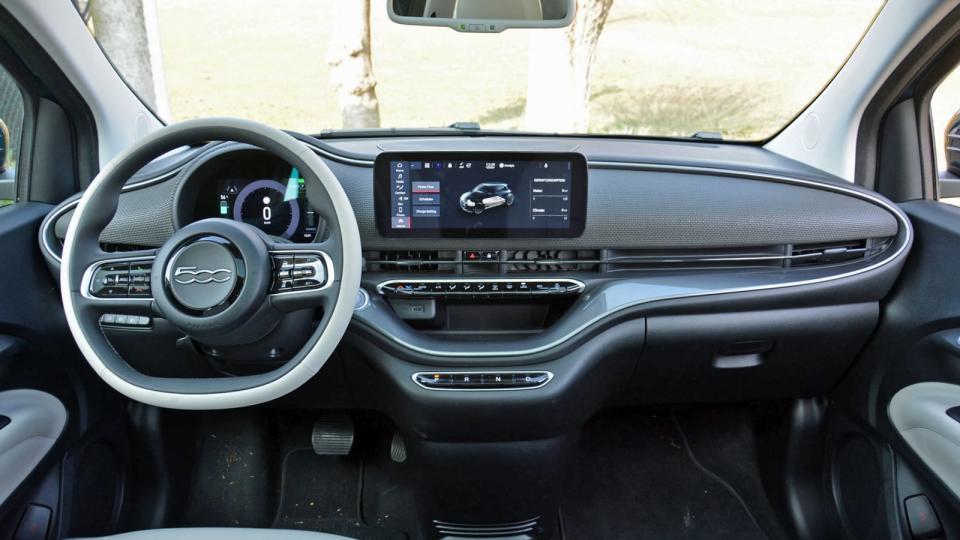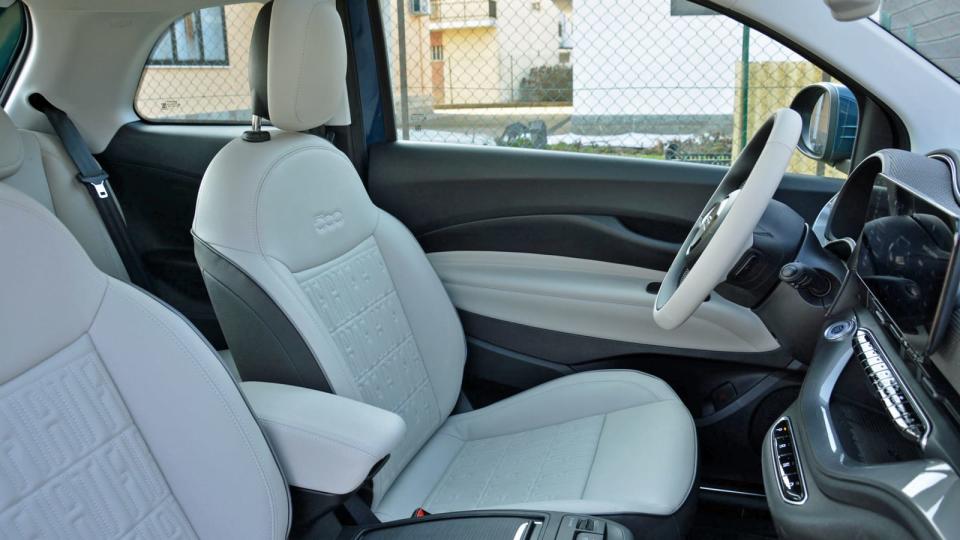2023 Fiat 500e First Drive Review: A European preview

TURIN, Italy – America’s relationship with the Fiat 500 has been rocky at best.
Skimming over the original, pre-war model, the second-generation 500 (the one with a rear-mounted engine) was briefly sold here with funky headlights that stuck out from the front end like a bug’s eyes. Small and underpowered, though a tremendous amount of fun to drive in its own way, it didn’t catch on and moseyed out of our market after a few short years.
The third-generation 500 spearheaded Fiat’s return to the United States when it disembarked here in 2012. It sold as well as you can expect a European-flavored subcompact hatchback to sell in the Ford F-150’s bastion and bowed out in 2019, though it’s still sold across the pond alongside its intended successor. That would be the fourth-generation 500, unveiled in 2020, which kept the retro design but went electric-only.
Sales in the United States are scheduled to start in early 2024, meaning the cheeky hatchback will be about four years old by the time it turns a wheel on American pavement. Is it worth the wait? I traveled to Fiat’s home town of Turin in northern Italy to get a better idea of what makes this fun-sized EV buzz.



There’s one point I need to address right off the bat: what you see in our gallery isn’t exactly what you’ll get when the new 500 rolls into American showrooms with an “e” attached to the end of its name. Fiat hasn’t detailed the American-market model yet, but it’s reasonable to assume most of the changes will be found on the specifications sheet and on the list of standard and optional equipment. Fiat can’t take a European-market car and ship it here unchanged, but I’m not expecting significant updates to the exterior or interior design — nothing suggests it will morph into an outdoorsy four-door crossover.
Speaking of design, it’s been the 500’s main selling point since the last-generation model made its debut in 2007 so Fiat’s edits were pretty light. I’d guess someone who isn’t up to date with what’s happening on car planet might not realize that they’re looking at a new 500, and that’s intentional. Still unabashedly retro, the model stands out from its predecessor with a new-look front end that features two-piece LED headlights and a big “500” emblem, bright beltline trim and a more chiseled hatch. Its proportions haven’t changed, but it’s slightly bigger than before: it stretches 143 inches long, 66.3 inches wide, and 60.1 inches tall, dimensions that make it about 3 inches longer, 2 inches wider, and 2 inches taller than the last 500 sold here. It’s offered as a hatchback with two or three (!) doors and as a quasi-convertible. I drove the two-door hatchback, and it’s too early to tell which variant(s) will come to the United States.
Bigger changes are scattered throughout the interior: the new 500e feels much nicer than the last-generation model, both in terms of fit and finish, and of equipment (it even has power-operated door handles, Maserati-style). It also benefits from the same fun approach to design that permeates most of the recent additions to the Stellantis portfolio. “FIAT” is stitched into the upholstery, the old 500’s outline appears in the interior door pull next to the phrase “Made in Torino,” and the Turin skyline is etched into the wireless charging pad’s mat. The driver faces a two-spoke steering wheel and a refreshingly simple digital instrument cluster, while a 10.25-inch touchscreen dominates the dashboard.
The similarities between the last-generation 500 and the new model are merely skin-deep; the two cars share nothing under the sheet metal. Built on a new platform, the 500e ships with a single, front-mounted electric motor that draws electricity from a tiny, 28.5-kilowatt-hour lithium-ion battery pack to zap the front wheels with 95 horsepower and 162 pound-feet of torque. This version tips the scale at 2,601 pounds, and my crystal ball tells me we’re unlikely to see it in the United States. What we’ll likely get (though keep in mind that this is pure speculation) is the drivetrain European motorists have to pay extra for. It’s still built around a front-mounted electric motor, but the battery pack’s size increases to 42 kWh and horsepower jumps to 118, though torque stays flat. In this configuration, the 2,843-pound 500e takes 9 seconds to reach 62 mph from a stop versus 9.5 seconds for the base model.


 Yahoo Autos
Yahoo Autos 
